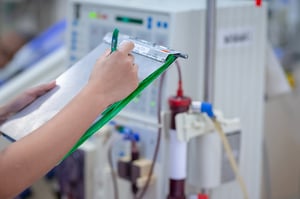Why Surveillance is Important: 8 Ways Vascular Access Surveillance Informs the Nephrologist
By Susan Eymann, MS25 Mar 2019
“A hemodynamically significant stenosis is the substrate for thrombosis by reducing flow, increasing turbulence, and increasing platelet activation and residence time against the vessel wall.” KDOQI Guidelines 20063 
Transonic Hemodialysis surveillance provides the nephrologist with myriad information that helps formulate an ideal treatment plan tailored for each patient. Listed below are eight ways that Transonic flow surveillance informs a nephrologist.
- Tells quantitatively actual function in AV grafts and fistulas in order to identify failing accesses and avert underdialysis, development of stenosis and/or thrombosis
- Indicates effectiveness of interventions (post-intervention surveillance) or limb ischemia
- Excludes access dysfunction quickly as cause of underdialysis
- Identifies a mid-access obstruction
- Identifies high-flow versus low-flow accesses to select ideal treatment plan for correction (flow-restricting versus re-vascularization procedure)
- Permits access surveillance to be performed by the clinic’s staff who then can alert nephrologists to possible onset of access dysfunction & referral for early intervention
- Implements 2006 KDOQI Guidelines3
- Implements Best Practices for patient care with Gold Standard reference method.




